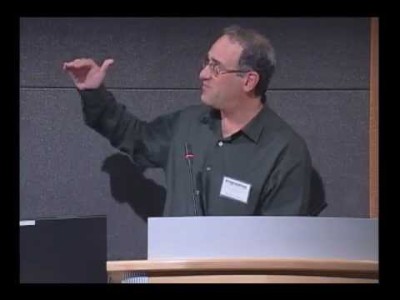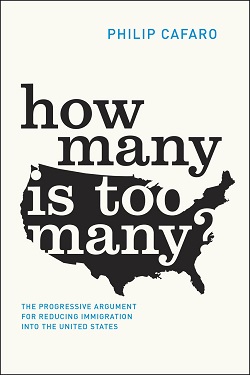What books had you so absorbed you found them hard to put down? One for me: the first edition of Man Swarm. When it comes to learning about the many ways overpopulation harms wildlands and wildlife, this book rocked my world. Working with Dave Foreman on the second edition of this book made me want to learn more about the biggest source of population growth in the United States: Immigration.
My interest led me to another page turner of a book that many people will consider quite controversial: How Many is Too Many? The Progressive Argument for Reducing Immigration into the United States by Philip Cafaro. In this book, Cafaro, a philosophy professor and School of Global Environmental Sustainability Faculty Member at Colorado State University, lays out hard-hitting truths about unintended consequences of mass immigration in America today. He delves into mass immigration impacts he claims even progressives have turned a “blind eye” to, including:
“how flooded labor markets in sectors such as meat packing and construction have driven down wages and driven up inequality; how excessive immigration has fostered unsafe working conditions and political disempowerment; how it has stalled our economic maturity by keeping us focused on unsustainable and ever-increasing consumption and growth; and how it has caused our population to grow and our suburbs to sprawl, destroy wildlife habitats, driving countless species from the landscape, and cutting people off from the natural world.”
While immigrants in large part built America and this has become a “motto of optimism and good will” in this country, Cafaro argues with convincing detail that times have definitely changed since the early days of America. As he writes, “The fact of the matter is we can’t afford to take in millions of people anymore.”
 I know – this is a big statement. But the more I read Cafaro’s case for reducing mass immigration, the more he helped me see we have a responsibility to reduce immigration when levels get so high they are harming our fellow citizens (which includes immigrants already here) and our society.
I know – this is a big statement. But the more I read Cafaro’s case for reducing mass immigration, the more he helped me see we have a responsibility to reduce immigration when levels get so high they are harming our fellow citizens (which includes immigrants already here) and our society.
America has seen times of restrictive immigration policy in the past with very positive effects. In How Many is Too Many? Cafaro gives a very powerful economic argument for reducing mass immigration. You’ll learn how between 1925 and 1965 reducing immigration numbers turned out to be a “golden age for American labor,” and created the world’s first mass middle class society. You’ll also learn how and why we went from there to where we are today, with a very different situation for the middle class and substantially higher numbers in total immigration (legal and illegal).
Cafaro examines environmental impacts of mass immigration, challenges how we think about economic “growth,” and presents a comprehensive plan to reform immigration policy that progressives will have a hard time saying it’s not in line with their overall political goals. He also takes on the list of objections to reducing immigration and exposes their flaws. All I can say is be ready to learn – a lot – that is not talked about nearly enough.
His treatment of this controversial subject is a must read. As Dave Foreman says of Cafaro: he is “our most trustworthy thinker and writer about immigration matters, because he does not demonize immigrants but rather sympathizes with them.” Cafaro shows how continued high immigration will be “deadly to…our culture of liberty and tolerance.”
If you are reading this and already feel surges of disagreement, I say please read How Many is Too Many? Like I did, I bet you will see a much deeper picture of immigration problems and solutions. No matter what your political persuasion, I also say read it. If there is one book out there to understand the complicated problem of immigration in America, this is it.


Thanks for the book recommendation of How Many is Too Many. I found the description very intriguing and subsequently read it in a day! I’ve had quite similar views as the author for a while now, and am glad to see someone giving the subject attention, even though unfortunately I honestly don’t think it will make much of a difference. I think that one issue he brought up is the major reason that there will likely be no changes in immigration policy (and definitely no reduction in numbers of immigrants). That issue is that whenever someone voices anything negative about immigration, they are labeled “selfish” and “racist,” so once the term “racist” comes up, everyone backs away. Even though my primary reason for being childfree is not population control, I am still very concerned about that, and the damage to the environment caused by increased numbers of people. I completely agree with the author that if something is not done about immigration, everyone is going to experience a reduction in quality of life. I’ve already been seeing that for several years in my area which has a high number of immigrants, both legal and illegal.
Hi Traci, Thanks for writing. I am glad you found the book intriguing, and read in a day – wow! I agree that long standing thinking about saying anything negative about immigration means one is anti-immigrant, racist, etc. is a tough hurdle. But as Dave Foreman says in Man Swarm, “population growth numbers from immigration are amazing. Ecological footprints-unsettling, to say the least. So why is the idea of reducing immigration met with such scorn? It starts with too much talk about immigrants instead of immigration.” More hard looks at what actual numbers do to our economy and environment need to happen. Reframing the conversation also really needs to happen for the benefit of immigrants who Are here – what is not talked about enough is that a good share of immigrants already here see the need to reduce mass immigration, because flooded labor markets affect them as well. The argument for “reduced” mass immigration is very different than wanting no immigration at all. Reduction is a far cry from being racist or nativist – it is ultimately supporting the common good for all – meaning immigrants And all others and their country.
I appreciate the treatment of a very hot topic. It seems hard to separate the person (immigrant) from the policy (immigration laws). Any law is going to be based on persons. That said, I like the following quote from your review:
“As Dave Foreman says of Cafaro: he is “our most trustworthy thinker and writer about immigration matters, because he does not demonize immigrants but rather sympathizes with them.” Cafaro shows how continued high immigration will be “deadly to…our culture of liberty and tolerance.”
I appreciate Traci’s comment about how people hesitate to speak against immigration in any way because they risk being labeled “racist”. I’ve seen an example of this (on FB, where else?). I was sad when I saw this exchange because each person had valid points. History points to what’s worked and what hasn’t. Unfortunately, history is forgotten quickly. There are no easy answers.